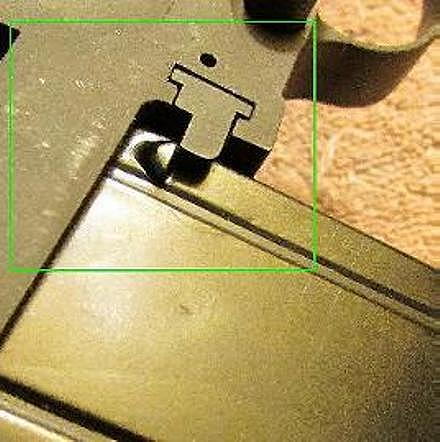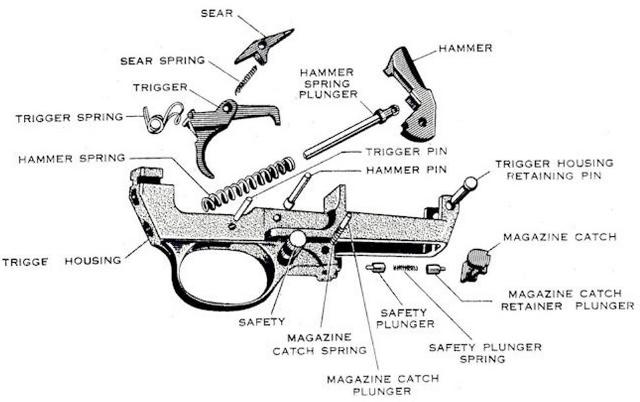
The early WW2 M1 Carbines did not have a bayonet lug, had a push button safety, and a standard M1 type magazine catch for the 15 round magazines. Later in the War, the push button safety was replaced with a rotating lever safety to prevent accidental releasing the magazine while trying to push the safety. The Bayonet lug was added in to some m1 Carbines in the late years of WW2 to some Carbines going to the Pacific. The M2 Magazine catch was added for use with the 30 round magazines.
If you have a early period correct Carbine, it is best to keep it with the push button safety and early mag release, and only use 15 round magazines with it to maintain its collector value. If yours has gone through any rebuilds, it most likely has a mixture of these already, so do as you wish with it.
Most of the Carbines that were used in Korea were very late ones with these updates, or were rebuilt after WW2, and had the updates applied.
If you are going to replace the mag catch, it is a good time to also replace the old push button safety at the same time if desired since they are co-located in the trigger housing.
If you are going to order a 30 round Magazine, make sure
your magazine
catch looks like this. If not, you need
to replace yours with a M2 type catch.
It is best to remove the trigger assembly from the rifle, and put
it is a clear bar, or a large box when doing this to prevent loss of the
small springs or plunger when they come flying out. I learned this
lesson in Vietnam. :(

There are some aftermarket M2 Magazine Catches on the net, with some of them working fine, and others being out of specs, which leaves the back of the magazine too loose, and low, causing poor feeding.


The magazine catch involves two springs. One is the safety spring that goes fore and aft in the assembly and has a plunger at either end. The front plunger rests in a groove in the magazine catch and holds the catch in place. The rear plunger holds the safety switch in place and provides positive locking for the "safe" and "fire" positions of the switch.

Because the safety spring holds both the magazine catch and safety in place, the safety switch cannot be removed until after the magazine catch is removed.

There is a hole in the bottom of the housing through which you can see the front plunger of the safety spring.
The magazine catch spring runs laterally into a well in the housing and places outward pressure on the magazine catch button. This is what holds the magazine catch closed after a magazine is inserted.
Press slightly in on the magazine catch button to release any tension of the catch on the safety spring. Use a scribe or jewelers screwdriver to pry the safety spring plunger to the rear which will release the magazine catch. Gently release the spring tension of the magazine catch spring.
After the magazine catch is removed, tip the assembly forward and catch the safety spring as it falls out of its well in the housing.